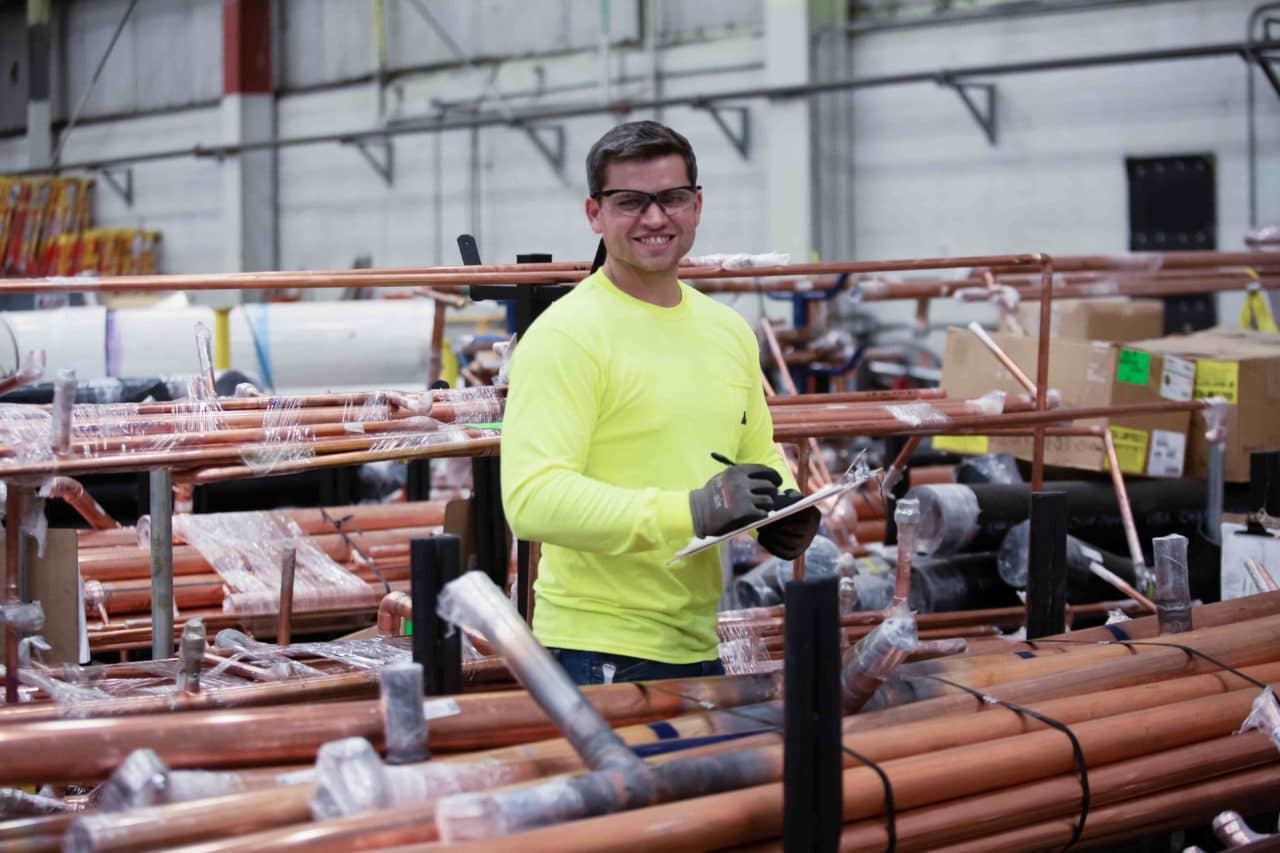Walk into the Lee Company fabrication shop – a remarkably immaculate warehouse of work – and you might see a hotel. A restaurant. A hospital. True, you’ll need to use a bit of imagination to see the finished facility, but this is where the building begins.
That stack of pipe and fittings? They’re about to become a building’s plumbing system. Those sheets of steel? Come back in an hour to see the framework for an HVAC system, ready for job-site delivery and easy installation.
“We are in the midst of the construction revolution,” says Brad Reimler, senior manager of virtual construction at Lee Company. “The power of modular assembly offsite allows us to prepare materials here and plug things together on site, just like they do in car manufacturing.
“We’re building projects all over Nashville right here in the fab shop.”
How it works
Fabrication takes Building Information Modeling (BIM) to the next level. Lee Company’s Virtual Construction Group works with architects, engineers, and designers, along with members of the sales and finance teams, to understand each project’s construction goals, plans, and budgets. Then, using BIM and other technology tools, the experienced Lee Company team takes the designer’s intent and makes it “fabricable.”
“What people struggle with is tying BIM, fabrication, and building together,” Reimler says. “With the capabilities we have at Lee Company, we can take projects from design through delivery – it’s seamless. We draw it. We fab it. We build it.”
The process includes:
- Coordinating all the trades
- Applying manufacturing data
- Breaking out the sections into drawings
- Creating the modular pieces
- Delivering materials to the job site
“Basically, we build the systems in pieces, put them on a cart, and deliver that cart to the job site at the appropriate time,” Reimler says. “The logistics crew transfers it to the next area, and the craftsmen have it when they need it.
“The old way was a lot different. If a foreman ordered boneyard material, like a ½ inch 90, someone had to go to the boneyard and try to find it. It could cost $100 to get a 25 cent pipe fitting. Now, the material is where it needs to be when it needs to be there.
“By prepping the materials and moving them to the job site as people need them, the quality and productivity of work improve,” Reimler says. “It’s a major shift to have some of the construction done at the fab shop, and it also has a huge impact on safety.”
Safety benefits include less bending and lifting for craftsmen at the job sites, reducing potential for strains and accidents.


